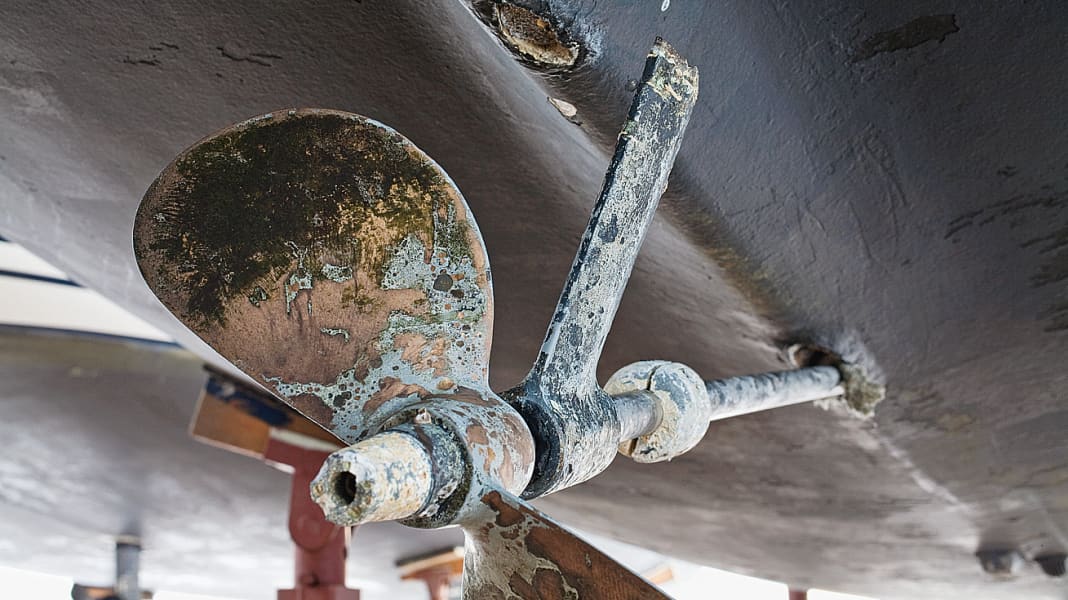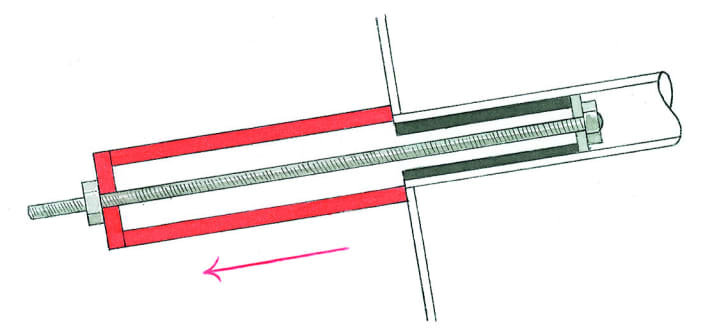
Wave lifehack 1: How the anode holds reliably

The anode is designed to prevent corrosion. The functional principle is that when two electrically conductive metals are connected in an electrolyte, the less noble metal corrodes. In order to protect the propeller and drive shaft, the less noble anode is attached to the bare stainless steel (electrically conductive!). In this case, the seawater is the electrolyte. However, there is a problem: the screws that secure the anode are also made of stainless steel, which is why the anode material dissolves at these points. However, if the hold is reduced, the anode rattles on the propeller shaft. This also reduces the contact and there is a risk of corrosion for the drive. We solve these problems with acrylic paint, with which the screw holes are painted and thus insulated. Loctite takes over this task in the thread. This keeps the areas around the screws intact and the anode holds reliably. Important: The contact surfaces on the drive must never be insulated with paint, otherwise the anode will lose its effect!
Helmut Neumann, Detmold
Wave lifehack 2: Easy bearing change

Once the shaft has been pulled out, a long M10 threaded rod with nut and washer is passed through the stern tube from the inside. The self-made extractor (red) is now placed over the threaded rod from the outside and a nut is screwed on. The bearing is pulled out of the stern tube by tightening the nut. The extractor tool consists of a steel tube with a soldered-on cover. The inner diameter must be larger than the diameter of the bearing, otherwise it will get stuck in the extractor. The new shaft bearing is hammered in with a plastic hammer.
Helmut Wengler, Berlin
Wave lifehack 3: Simply injected

Modern shaft seals, such as those from Volvo Penta, should be lubricated once a year. Although a special grease tube is available for this purpose, its nozzle is about four millimetres in diameter, making it too thick to get between the shaft and the rubber sleeve. We therefore use a disposable syringe, which we have fitted with a 2.5 millimetre thin tube from the aquarium accessories.
Helmut Wengler, Berlin
Wave lifehack 4: No more rattling!

Anyone who starts the diesel from time to time at the end of the season feels disturbed by the noise generated by the anode, which is increasingly loose on the shaft, as I do. I simply put a stop to the urge to move the disintegrating zinc mouse by wrapping a cable tie around the shaft in front of and behind the anode. This has no effect on the concentricity of the shaft, the plastic strips are light enough. But the rattling has now stopped once and for all.
Jörn Voigt, Trittau
Do you have any advice for other sailors?
We will honour the publication of your lifehack with 50 EURO. Please add photos or sketches. We also need your address and bank details.
Submissions to: Editorial office YACHT, Quartier O, Paul-Dessau-Straße 8, 22761 Hamburg; or: mail@yacht.de
